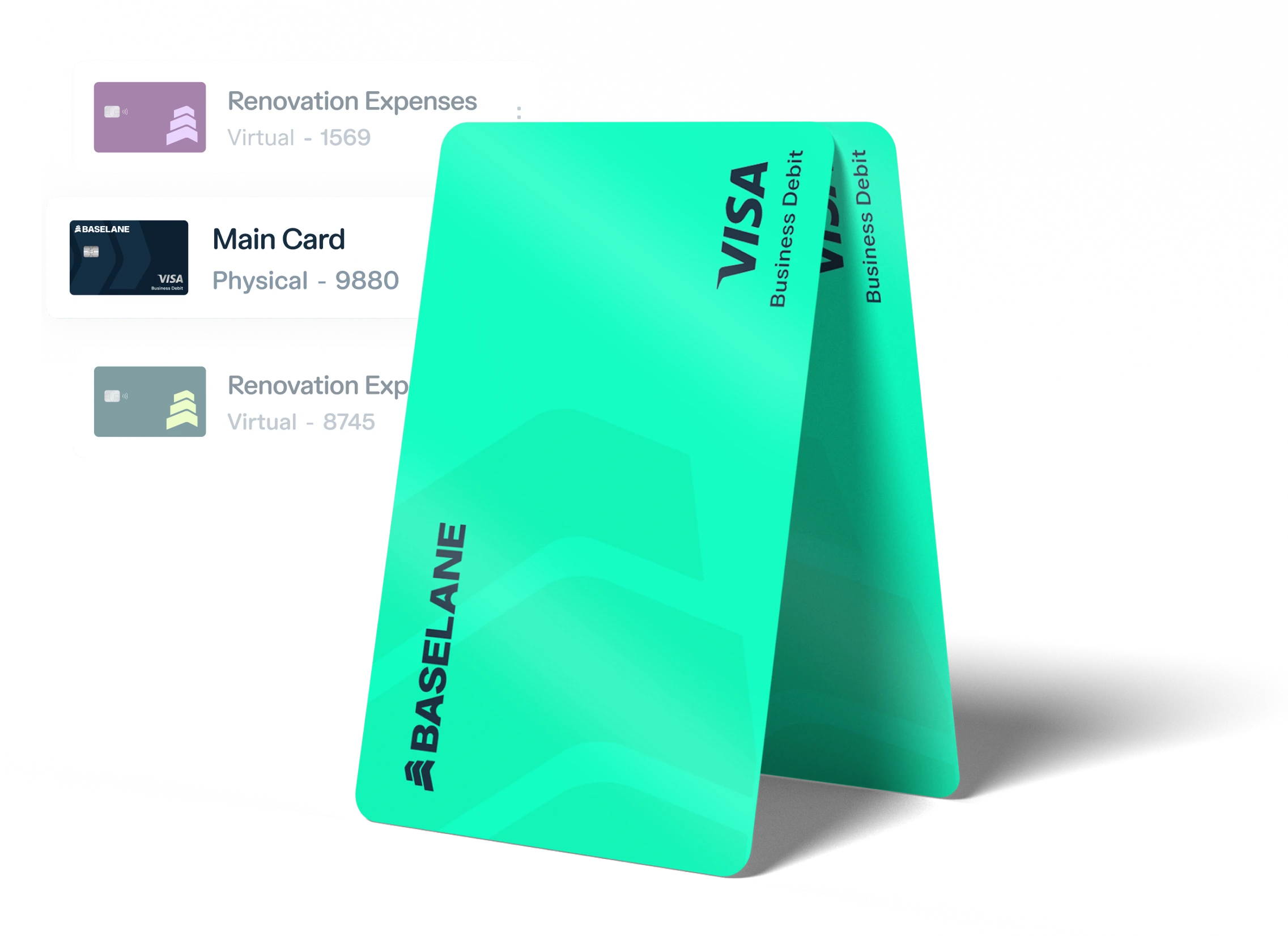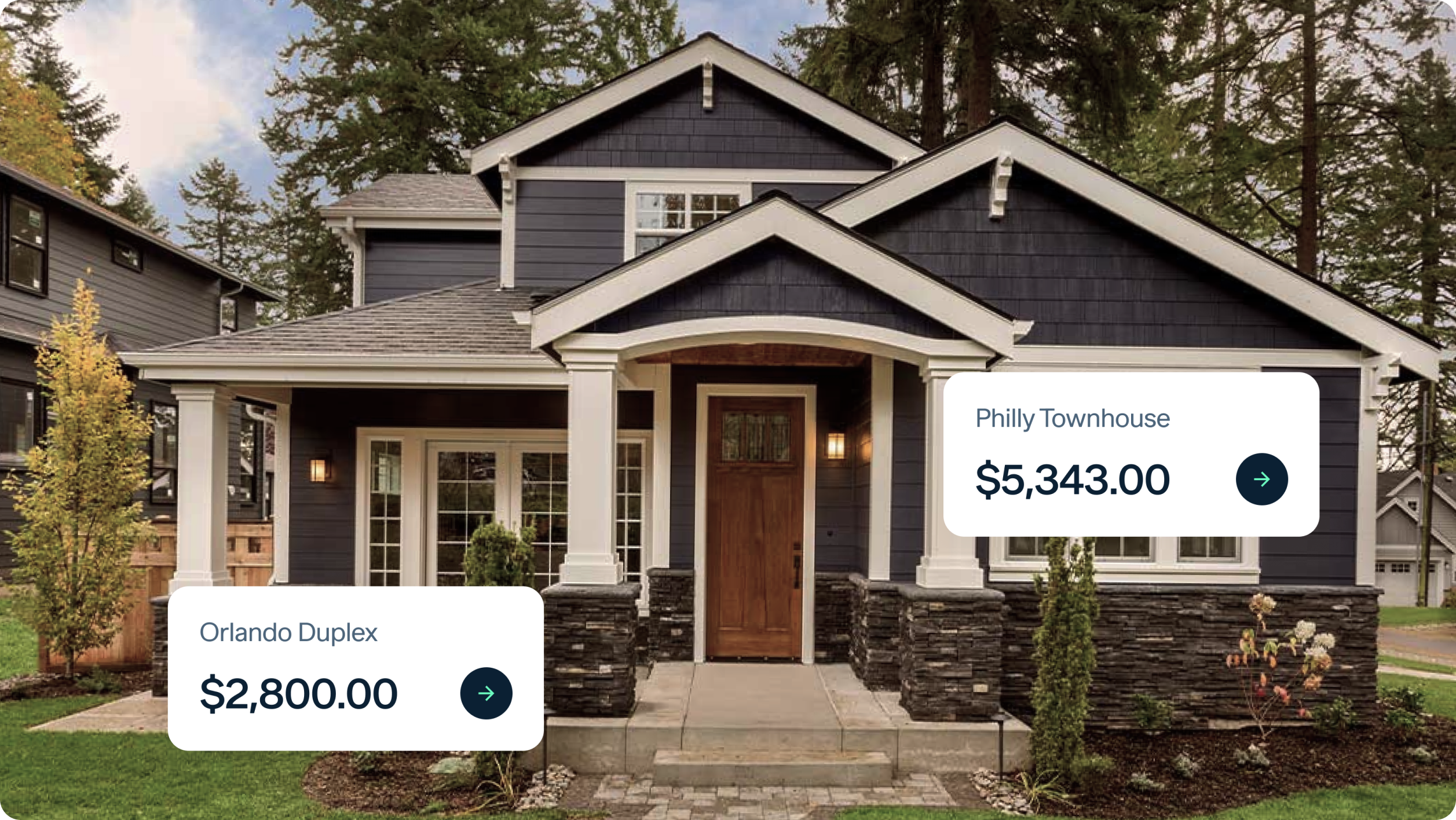Investing in real estate for long-term rentals can be a powerful path to building wealth and generating passive income. Securing the right financing is a critical step in this journey, offering the leverage needed to acquire properties you might not otherwise afford.
Understanding the various options available can help you make informed decisions that align with your financial goals and investment strategy. This guide explores the world of rental property loans, detailing the types, terms, and requirements you need to know.
Key takeaways
- Long-term rental loans are mortgages specifically for investment properties with annual or multi-year leases.
- Options include conventional loans, DSCR loans, portfolio loans, and commercial loans for larger properties.
- DSCR loans are popular because they often don’t require personal income verification, focusing instead on property cash flow.
- Investment property loans typically require higher credit scores and larger down payments than primary residence mortgages.
What is a long-term rental loan?
Long-term rental loans are mortgage options designed for real estate investors financing properties they intend to rent out on an annual or multi-year basis. These loans differ from mortgages for primary residences because they are underwritten based on the property’s income-generating potential and the borrower’s overall investment profile, not just personal housing needs.
Investors use these loans to acquire properties that can provide stable cash flow through rent collection, contribute to long-term portfolio growth through appreciation, and offer potential tax advantages. Getting a mortgage for an investment property is typically harder than for a primary residence, requiring sufficient property cash flow to cover expenses and potential issues.
Baselane’s financial tools can help investors track property-specific income and expenses, providing the clarity needed to understand a property’s cash flow for financing applications.
Types of long-term rental property loans
The landscape of financing for rental properties offers several paths depending on your specific needs and the property type. Exploring different types can help you determine the most suitable financing strategy for your investment goals. Here are some common options for the type of loan for investment property.
Conventional loans
Conventional loans are a widely used financing option for 1-4 unit residential rental properties. They are not backed by a government agency like the FHA or VA. While familiar, conventional loans for investment properties have stricter requirements than those for primary homes.
They typically require higher credit scores and larger down payments. Baselane, as a banking platform, can help investors organize funds for down payments and cash reserves, ensuring they are prepared for these requirements.
DSCR loans
Debt Service Coverage Ratio (DSCR) loans have gained popularity among real estate investors, particularly those with multiple properties or complex income streams. These loans focus heavily on the property’s ability to generate enough income to cover its mortgage payments. A key feature is that they often do not require personal income tax returns or pay stubs for qualification, making them “low-doc” options.
Instead, the lender calculates the DSCR by dividing the property’s net operating income (NOI) by the total debt service (principal and interest payments). A DSCR of 1.0 means the property’s income exactly covers the debt; lenders typically require a DSCR above 1.0, often 1.20 or higher, to ensure a buffer. For investors scaling quickly, DSCR loans can simplify the application process compared to conventional loans.
Portfolio loans
For investors seeking to finance multiple properties under a single loan or those with unique property types, portfolio loans can be an option. These loans are held by the lender internally rather than being sold on the secondary market. This allows for more flexibility in underwriting criteria and terms.
While they offer flexibility, portfolio loans may come with higher interest rates and potential prepayment penalties compared to conventional options. They are suitable for investors managing a portfolio of 1-4 unit residential properties who want a streamlined financing solution.
Commercial loans for rental property
If you are looking to finance a property with five or more residential units or a mixed-use building, a commercial loan is typically the appropriate commercial loan for rental property. These loans are structured differently from residential mortgages.
Terms often range from 5 to 20 years, generally shorter than residential loans. Commercial loans usually require a higher down payment, typically between 20% and 30% or more.
Other loan options
While less common for dedicated long-term rental investors unless specific conditions apply, other financing avenues exist. An FHA loan for investment property is primarily for owner-occupants but can be used for small multifamily properties (2-4 units) if the owner occupies one unit.
Home equity loans or lines of credit on a primary residence or existing investment property can also provide capital, though this strategy involves leveraging existing assets. Jumbo loans may be needed for properties exceeding conventional loan limits in high-cost areas.
Typical terms and requirements
Understanding the standard terms and requirements for long-term rental loans is crucial before you apply. These factors significantly impact your monthly costs, cash flow, and overall investment profitability. Baselane’s bookkeeping tools can help you analyze potential expenses and income to determine feasibility.
Loan duration
Long-term rental loans commonly feature a 30-year amortization period. This provides lower monthly payments, contributing to better monthly cash flow for the investor. While 15-year terms exist and can save significantly on interest over the life of the loan, they result in higher monthly payments.
The choice between a 15-year and 30-year loan depends on your cash flow needs and long-term financial strategy.
Interest rates for rental property
Interest rates for investment properties are typically higher than those for primary residences due to the perceived higher risk. As of 2025, conventional rental property mortgage rates average between 4.5% and 6.5%. Portfolio and blanket loans are often higher, potentially reaching 8% or more.
Rates are determined by market conditions, the loan type, your creditworthiness, down payment size, and the property’s financial strength. Fixed-rate loans offer predictability in monthly payments, while adjustable-rate mortgages (ARMs) may offer a lower initial rate that can change over time.
Loan-to-value ratios
LTV is the loan amount as a percentage of the property’s value. Lenders for investment properties typically require lower LTVs than for primary homes, meaning higher down payments. Conventional loans often have LTV limits requiring 15- 25 %+ down payments.
DSCR loan LTVs can go up to 80% for purchase or rate/term refinances and 75% for cash-out refinances. Lower LTVs generally result in better loan terms and rates.
Credit score requirements
Your credit score is a key factor in qualifying for a long-term rental loan and securing favorable terms. Conventional loans typically require a minimum credit score of 620 with a 25% down payment, or 680 with a 15% down payment. Higher scores generally unlock lower interest rates.
DSCR loans often have minimum FICO requirements around 660-680, though some lenders may accept slightly lower scores. Maintaining a strong credit profile is beneficial across all loan types.
Down payment expectations
Be prepared for a larger down payment when financing a rental property compared to a primary residence. Conventional loans usually require a minimum of 15-25% down. DSCR loans often require 20-25% or more down.
Commercial loans for properties with 5+ units may require down payments of 20-30% or higher. The size of your down payment directly impacts your LTV and loan terms.
Cash reserve requirements
Lenders often require investors to have cash reserves readily available to cover potential vacancies, repairs, or unexpected expenses. Conventional rental property mortgages often require demonstrating reserves equivalent to six months of mortgage payments (principal, interest, taxes, and insurance). Requirements vary by lender and loan type.
Having sufficient reserves demonstrates financial stability and your ability to weather potential dips in rental income. Baselane’s banking platform allows you to create separate accounts for each property and reserve, simplifying the tracking of these funds.
DSCR requirements vs. personal income verification
For conventional loans, lenders verify personal income through tax returns, pay stubs, and employment history to assess repayment ability. DSCR loans, however, primarily rely on the property’s projected or current cash flow. The calculation of the Debt Service Coverage Ratio determines eligibility.
While personal income isn’t the primary factor for DSCR loans, lenders will still evaluate your overall creditworthiness and look at your financial history. Understanding DSCR is crucial for this loan type.
How to qualify for a long-term rental loan
Qualifying for a long-term rental loan involves demonstrating both personal financial health and the property’s viability. Here’s a general step-by-step process on how to get a loan for a rental property.
First, assess your financial situation, including your credit score, income, and available funds for a down payment and reserves. Next, analyze the potential rental property to project its income and expenses accurately. This is where tools like Baselane’s bookkeeping features are invaluable for tracking similar properties or projecting costs.
Gather necessary documentation, which will vary by loan type but generally includes personal financial statements, tax returns (for conventional loans), and property-specific information like market rent estimates or existing leases. Be prepared for a more stringent review process than for a primary home loan. Addressing any credit history issues or insufficient reserves beforehand can smooth the process.
Get quick and easy financing at competitive rates from top lenders across 48 states.
Comparing long-term rental loan options
Choosing the right loan means weighing the features and requirements of different types against your investment strategy and financial standing. Each loan type has its advantages and disadvantages. Consider factors like interest rate, repayment period, down payment size, and the complexity of the application.
The comparison table below summarizes key features to help illustrate the differences. Use this as a starting point to understand which options might align best with your goals.
| Feature | Conventional Loan | DSCR Loan | Portfolio Loan | Commercial Loan (5+ units) |
|---|---|---|---|---|
| Based On | Borrower Personal Income & Credit | Property Cash Flow (DSCR) | Property Portfolio Cash Flow & Credit | Property Cash Flow & Borrower Credit |
| Income Verification | Required (Tax Returns, Pay Stubs) | Not Required (Focus on property DSCR) | Varies (Often DSCR-based) | Required (Property financials) |
| Loan Term | 15-30 years | 5-30 years (often 30-year fixed options) | 5-20 years | 5-20 years |
| Interest Rate | Can be competitive, generally lower | Generally higher than conventional | Varies, often higher than DSCR | Varies widely |
| Down Payment | 15-25%+ | Often 20-25%+ | Varies (can be higher) | 20-30%+ |
| Credit Score (Min) | 620-680+ (Often higher for best rates) | 660-680+ | Varies | 660-700+ |
| Property Type | 1-4 residential units | 1-4 residential units (sometimes STR) | Multiple 1-4 unit residential | 5+ unit multifamily, mixed-use |
| Complexity | Moderate | Moderate (understanding DSCR is key) | Can be complex | High |
This table highlights that conventional loans are more focused on the borrower’s finances, while DSCR and commercial loans prioritize property performance. Portfolio loans offer flexibility for multiple properties but may have different terms. Baselane’s bookkeeping can help you track financials needed for DSCR or commercial loan applications.
Long-term rental loans and the BRRRR strategy
The BRRRR strategy (Buy, Rehab, Rent, Refinance, Repeat) is a popular method for building a rental portfolio. The final “Refinance” step in BRRRR often involves securing a long-term rental loan. After purchasing a property, renovating it, and renting it out, investors use a long-term refinance to pay off the initial short-term financing (like a hard money or bridge loan).
A long-term rental loan, often a DSCR loan or conventional loan, replaces the short-term debt. A cash-out refinance can allow the investor to pull out capital (up to a certain LTV) based on the property’s new, higher value. This capital can then be used to fund the “Buy” phase of the next property, continuing the cycle. Understanding long-term refinance options is key to successfully executing the BRRRR strategy.
Choosing the right long-term rental loan for your investment goals
Selecting the appropriate long-term rental loan is a strategic decision unique to each investor and property. There isn’t a single “best” option; the ideal loan depends on several factors. Consider the type of property you are buying (1-4 units vs. 5+ units), your specific investment strategy (e.g., maximizing cash flow, rapid portfolio growth), and your financial situation (credit score, income, capital available).
Your risk tolerance also plays a role; fixed rates offer stability, while variable rates might offer lower initial payments but introduce uncertainty. Shopping around and comparing offers from different lenders is crucial to finding competitive terms and rates for rental property. Consulting with financial professionals or experienced lenders can provide tailored guidance based on your circumstances.
Bottom line
Long-term rental loans are essential tools for real estate investors aiming to build sustainable passive income and grow their portfolios.
By understanding the different types, conventional, DSCR, portfolio, and commercial, and their associated terms and requirements, you can navigate the financing landscape effectively. Choosing the right loan involves careful consideration of your financial health, the property’s potential, and your investment goals.
Managing the finances of your rental properties, from tracking income and expenses for loan applications to managing monthly payments, requires robust systems. Baselane’s financial platform offers integrated banking, bookkeeping, and rent collection solutions designed specifically for landlords. Take control of your rental property finances with Baselane to simplify operations and focus on scaling your investments. Sign up for free today.
FAQs
A long-term rental loan is a mortgage used by real estate investors to finance properties intended for annual or multiyear leases. Qualification is typically based on the property's income potential and the borrower's investment profile.
DSCR (Debt Service Coverage Ratio) loans evaluate a property's cash flow by comparing its net operating income to its mortgage payments. Lenders use this ratio to determine loan eligibility, often without requiring verification of the borrower's income.
Yes, investment property loans generally require larger down payments than primary residence mortgages, typically ranging from 15% to 30% or more, depending on the loan type and lender requirements.








